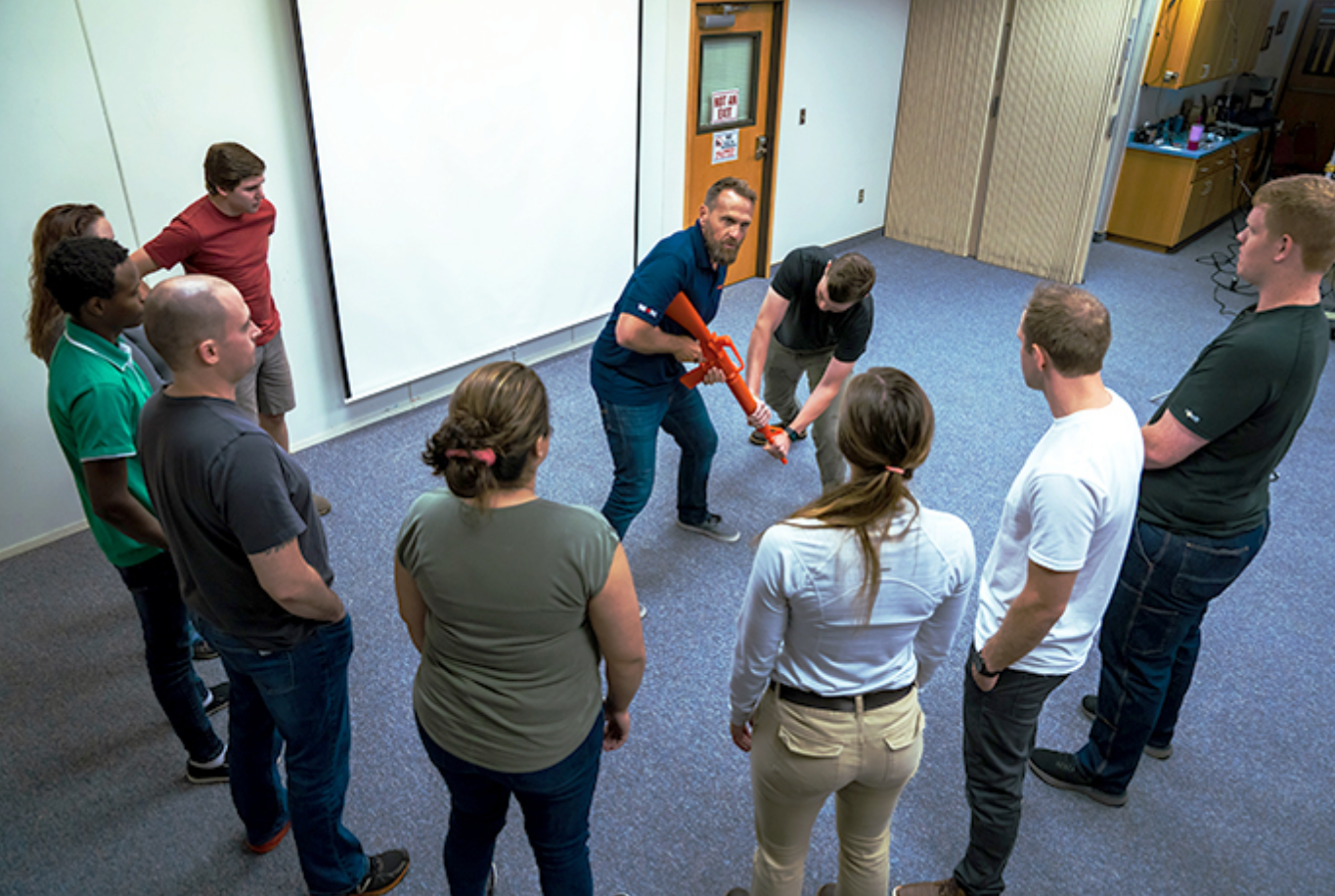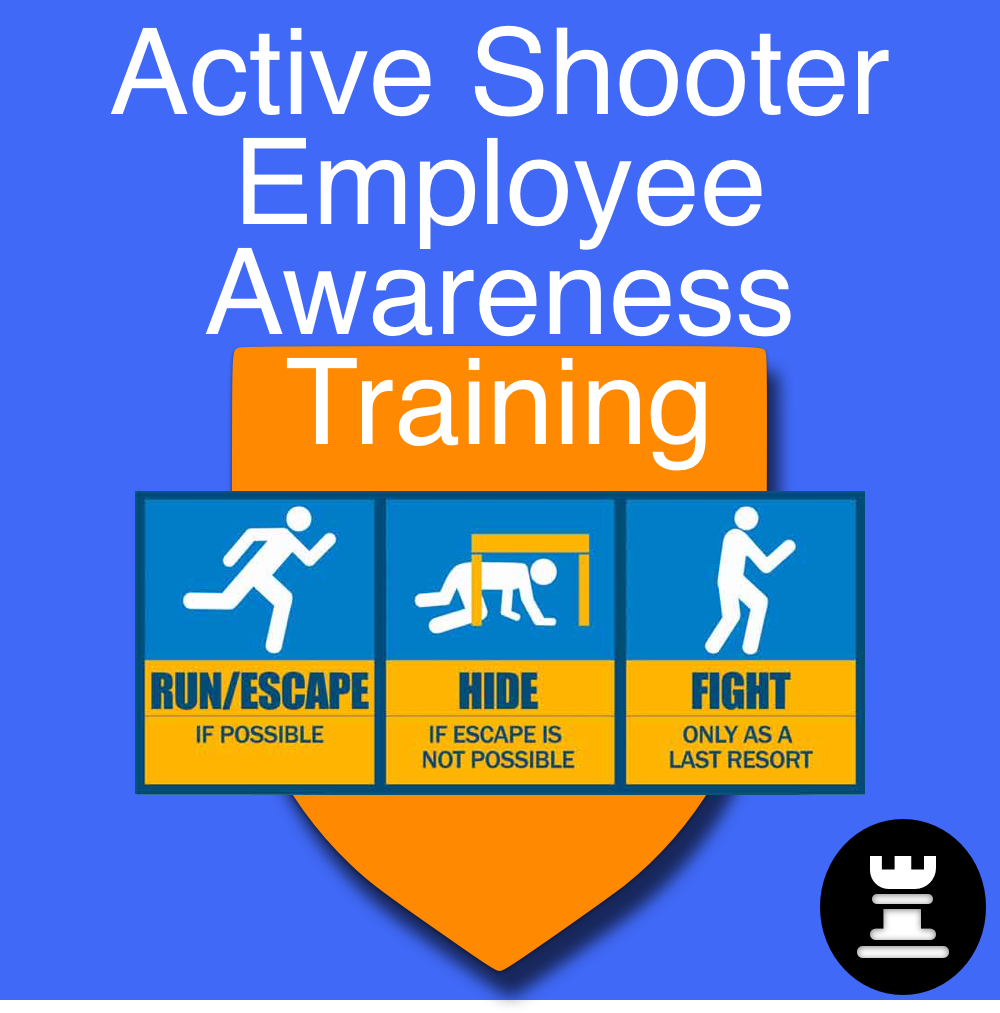The Important Role of Energetic Shooter Training in Enhancing Emergency Situation Feedback Methods in Different Environments
Active shooter training has arised as a basic part in refining emergency situation action approaches across diverse setups, from universities to company atmospheres. By outfitting individuals with customized knowledge and abilities, these programs not only prepare participants for possible dilemmas but additionally cultivate a society of understanding and cooperation. Nevertheless, the effectiveness of such training pivots on different factors, including the details context in which it is carried out and the ongoing dedication to improvement. Checking out these measurements exposes vital understandings that might dramatically influence preparedness and feedback outcomes when faced with alarming hazards.
Importance of Active Shooter Training
In an age noted by increasing problems over public safety, the value of energetic shooter training can not be overemphasized. As incidents of weapon violence in public rooms proceed to increase, organizations throughout different sectorsâEUR" universities, work environments, and public venuesâEUR" are identifying the necessity of preparing their workers and communities for such emergency situations. Active shooter training gears up individuals with critical skills and expertise to respond effectively in life-threatening scenarios, possibly minimizing casualties and conserving lives.
The training not only concentrates on prompt feedback activities, such as emptying and safeguarding in position, but also fosters a society of awareness and readiness. By taking part in sensible simulations and conversations, participants can identify potential vulnerabilities within their setting and create methods for mitigating dangers. Such training improves communication and coordination among team members and initial -responders, ensuring a much more unified strategy during dilemmas.

Secret Elements of Effective Training
Reliable active shooter training comprises a number of essential parts that improve readiness and reaction capabilities. First and foremost, practical scenario-based simulations are crucial. These workouts submerse participants in high-stress situations that simulate potential active shooter occasions, permitting them to practice decision-making and physical responses under stress.
Additionally, training has to include a thorough understanding of interaction methods. Individuals ought to be fluent in just how to pass on crucial info to regulation enforcement and fellow people during an event. This consists of making use of emergency situation alerts and understanding the hierarchy.
One more necessary part is the unification of psychological health understanding. Training must attend to the emotional influence of energetic shooter scenarios, furnishing participants with coping strategies and resources to sustain their psychological well-being post-incident.
In addition, routine refresher programs are vital to ensure that skills remain sharp and expertise is updated. This constant education enhances the value of preparedness and fosters a society of security within organizations.
Training for Various Atmospheres
Active shooter training must be customized to the particular environments in which people operate, as each establishing presents special difficulties and dynamics. For circumstances, training in a business office will certainly differ considerably from that in a school, buying mall, or health care facility. Each setting requires a customized strategy that takes into consideration variables such as design, population density, and readily available escape paths.
In academic institutions, training programs must emphasize lockdown treatments, interaction protocols with police, and strategies for safeguarding pupils. On the other hand, in company settings, training may concentrate on emptying methods, recognizing questionable actions, and using offered sources for protection or shelter-in-place scenarios.
Additionally, public places like malls or sporting occasions call for extensive crowd monitoring techniques, with a focus on quick reaction sychronisation amongst safety and security employees and local police.
In health care environments, training needs to address particular susceptabilities, such as the presence of individuals that may call for instant aid. By comprehending the unique features of each environment, organizations can establish reliable training components that enhance preparedness and boost total security, making certain that people are equipped to respond properly in different crisis circumstances.

Structure a Society of Awareness
Producing a culture of understanding is essential to improving precaution in any atmosphere, as it encourages people to identify potential threats and respond proactively. This culture demands continual education and learning, open interaction, and the combination of security procedures right into daily routines.
Organizations needs this page to prioritize energetic shooter training as part of their overarching safety approach, guaranteeing that all employees understand the details risks connected with their setting. Routine training sessions grow vigilance and experience with emergency situation procedures, motivating people to remain sharp to uncommon behaviors or circumstances.
Furthermore, fostering a culture of recognition involves developing an environment where reporting dubious activity is both urged and stabilized. active shooter training. Employees must feel comfy sharing their concerns without worry of retribution. This can be attained with clear networks of communication and helpful management
In addition, participating in neighborhood collaborations can enhance recognition past organizational boundaries, promoting a shared obligation for security. Efforts such as workshops, drills, and educational sessions can further enhance collective watchfulness. Eventually, constructing a culture of understanding not only prepares individuals for prospective dilemmas however likewise enhances the general durability of the organization against risks.
Examining Educating Efficiency
While routine training sessions are crucial for readiness, reviewing their performance is just as crucial to make sure that workers are geared up with the required skills and understanding to respond appropriately in the event of an energetic shooter scenario. Examination processes ought to include both qualitative and quantitative analyses to determine the effect of training on reaction capabilities.
Surveys and feedback from participants can provide valuable understandings right into the training's importance and applicability. In addition, carrying out functional drills and simulations enables organizations to observe real-time decision-making and teamwork under stress. Evaluating the outcomes of these workouts assists determine strengths and locations for renovation.

Involving stakeholders, including law enforcement and emergency situation -responders, in the analysis process can improve credibility and give an extensive viewpoint on training efficiency (active shooter training). Ultimately, a methodical assessment approach makes certain that energetic shooter training stays an essential component of an organization's go to my blog emergency action method, cultivating a more secure environment for all
Conclusion
Active shooter training is important in strengthening emergency situation action methods throughout varied atmospheres. By furnishing people with the necessary skills and expertise, such training boosts readiness and control throughout critical incidents. Customized strategies for numerous setups guarantee that specific vulnerabilities are addressed, cultivating a society of understanding and discover this constant education. Inevitably, the execution and examination of effective training programs contribute significantly to minimizing the impact of active shooter situations, thereby guarding lives and improving community resilience.